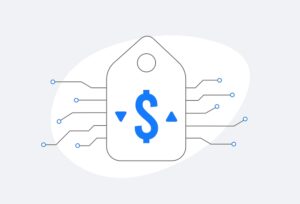The challenge for companies running multichannel marketing campaigns lies in the ever-present gap between marketing and sales. Marketers are focused on generating a high volume of high-quality leads, while sales teams are interested in getting qualified sales opportunities. When marketing teams don’t do all they can to get someone to the status of a qualified sales opportunity, sales begins to sense a rift.
“Marketing’s saying, ‘We’re doing all this for you,’ and sales is saying, ‘Where are the sales-qualified leads coming from?’” said Laurie Beasley, president of Beasley Direct Marketing. Fortunately, she says that this gap is “completely solvable.”
At last month’s Integrated Media Week in New York, Beasley laid out a number of things marketers can do to close the gap between sales and marketing, and how marketers can deliver exactly what sales is looking for.
A Clear Definition
To work well with sales, marketing must have a clear definition of what sales considers a “sales-ready lead,” said Beasley.
This means marketers need figure out what trigger events create an environment for a sale, learn about the size of the opportunity and understand the level of urgency needed (i.e., what the time line should look like), among other things.
In order to get to this level of granular understanding, marketers need to ask prospects a lot of questions. This way they can comprehensively understand their “BANT”—budget, authority, need and timeframe.
“When you hand a lead over with this kind of data attached to it, start thinking about what kind of Christmas gift you’re going to get from sales,” Beasley said. “They’re going to love you more than they’ve ever loved you, because you’re giving them exactly what they want, and you, in marketing, have the ability to create that kind of lead for sales.”
The Human Touch
Beasley noted that she has heard some of her clients long for linking up Marketo or Eloqua with Salesforce to help them. “There is this myth out there that that sort of solves all the problems,” she said. “It doesn’t really, because even if someone comes through marketing automation and they are an automation-qualified lead, they have a very hard time becoming a sales-qualified lead without some nurturing by a human being, meaning telemarketing or inside sales.”
There are two main reasons why companies are hesitant to use more of a human touch, according to Beasley. They may havealready spent a lot of money on platforms like Marketo, Eloqua or Salesforce and don’t have any budget left for things like teleprospecting, or, they think people don’t answer their phones anymore.
The latter is a fallacy, according to Beasley. “Human beings like to talk to human beings.”
Persistent Nurturing and Touch Points
Beasley said that two years ago, she set out on a mission to figure out how many touches it takes for her demand-generation clients running multichannel campaigns to get someone to sales-qualified status. She found that it can take 4-13 touches, but sales often gives up after the second touch.
“That means that you, in marketing, often have to manage those 13 touches,” Beasley said. This means marketers have to plan ahead for potentially 13 or more nurturing touches, such as email, multiple phone calls to find the right person within an organization, direct mail, requests for whitepapers or demos, or webinars.
“You have to do your touch communications sequence testing,” Beasley said. This involves testing and observing individual programs then seeing how they compare with touch sequences (e.g., email + call + direct mail). The more spreadsheet cells there are in a test, the successful a full-blown follow-up campaign will be.
Get Through to the Decision-Maker
While prospect databases are only so helpful in terms of yielding deliverable email addresses and valid phone numbers, they do offer something to work with. The key for marketing teams is getting sales to define the segments they want marketing to pursue. This will help marketing to whittle down and hone in on those prospect lists by job titles and use email and teleprospecting to navigate to the right people.
Beasley said that about half the time when her clients call unresponsive prospects based on their title, the response is, “I’m not really the decision-maker. You should talk to so-and-so.”
This, of course, is a referral. The key to getting that person to tell you the name of the decision-maker is to ensure that your initial communication is high-quality and that the level of the offer establishes a benchmark in the person’s mind about how valid your company is to market to their company, according to Beasley. The better the content and presentation, the more likely the person is to refer you to the decision-maker in their company.
“From that referral, you can begin to go down a nurture path,” Beasley said.
Formalize the Process and Figure out the Gap
Figuring out the lead funnel is the one step that companies too often skip, according to Beasley. She said that multichannel lead-gen campaigns and touch metrics should be organized in a spreadsheet. “There’s no replacement for a good old spreadsheet.” This will help marketers to figure out where the gaps will be.
For instance, if marketing knows that SEO, paid search, trade shows and other channels will each bring in a certain number of qualified leads, they can figure out the projected total number of qualified leads at the end of a month or quarter. If there’s a gap between the goal and the projection, something needs to be done.
“Typically, what I have seen is kicking in much more outbound teleprospecting overlaid on programs seems to be able to a way to fill in that gap and begin to create a more reliable, steady flow of qualified sales opportunities coming into the lead funnel,” Beasley said. “I think you have to budget for teleprospecting.”
Creating Compelling, Consistent Offers
Marketers should remember to always offer something of perceived value. Beasley noted that she’s observed that small e-books often work well for her clients.
It’s also important to keep offers consistent across all media. This is especially important for retargeting campaigns. If different offers are used in retargeting campaigns and email campaigns, it’s akin to self-inflicted sabotage, according to Beasley. Avoiding this requires companies to get rid of mini-silos and have a broader perspective.



 Network
Network

